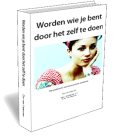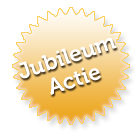Metabletica in the field
of quantum physics
I have more feelings…go from movie to movie in my head. Write me, ask and share: cor@corvanleeuwen.com
i came across some interesting books that explore consciousness and related topics. “The User Illusion: Cutting Consciousness Down to Size” by Tor Norretranders is known for challenging our understanding of consciousness. Lynn McTaggart’s “The Field” explores the concept of a universal energy field, and “Metabletica” by Jan Hendrik van der Berg delves into the nature of communication and human experience. It’s fascinating to see how these different perspectives can intersect and provide new insights.
Here’s an overview of the content of each book and a brief introduction to the authors to make life easier
“The User Illusion: Cutting Consciousness Down to Size” by Tor Norretranders: In this book, Tor Norretranders, a Danish science writer and journalist, explores the idea that consciousness is not the central driving force behind human behavior as we often perceive it to be. He argues that the vast majority of our mental processing occurs outside our conscious awareness, suggesting that our conscious mind is more like a spectator rather than the ultimate decision-maker. Norretranders draws on various scientific studies and theories to support his claims, offering a thought-provoking perspective on human consciousness.
“The Field” by Lynn McTaggart: Lynn McTaggart, an investigative journalist, delves into the concept of a universal energy field in this book. She presents scientific research and anecdotes suggesting that there is a unifying energy field that connects everything in the universe. McTaggart explores the implications of this field on human consciousness, health, and the interconnectedness of all living beings. “The Field” challenges conventional scientific thinking and invites readers to consider a broader perspective on the nature of reality.
“Metabletica” by Jan Hendrik van der Berg: “Metabletica” is a philosophical work by Jan Hendrik van der Berg, a Dutch psychiatrist and philosopher. The book examines communication and human experience, particularly focusing on the ways in which we construct meaning and reality through our interactions with others. Van der Berg explores concepts such as intersubjectivity, empathy, and the dynamics of interpersonal relationships. “Metabletica” offers insights into the complex nature of human communication and its impact on our understanding of the world.
These three books provide distinct perspectives on consciousness, reality, and human experience. Each author offers unique insights and challenges conventional thinking in their respective fields.
Certainly! Let’s explore the differences and similarities between Tor Norretranders’ “The User Illusion,” Lynn McTaggart’s “The Field,” Jan Hendrik van der Berg’s “Metabletica,” and the contributions of Richard Feynman, particularly his work on atomic bomb development and his unique sense of humor:
Differences:
Subject Matter: “The User Illusion” focuses on challenging our understanding of consciousness and the role it plays in human behavior. “The Field” explores the concept of a universal energy field and its implications. “Metabletica” delves into communication and human experience. Richard Feynman’s work primarily revolves around physics, including his involvement in the development of the atomic bomb.
Author Backgrounds: Tor Norretranders and Lynn McTaggart are science writers and journalists, whereas Jan Hendrik van der Berg is a psychiatrist and philosopher. Richard Feynman, on the other hand, was a renowned physicist and Nobel laureate.
Scope of Exploration: Each book takes a different approach in examining its respective subject matter. “The User Illusion” focuses on consciousness and cognition, “The Field” delves into the realm of energy fields and their effects, and “Metabletica” explores communication and human interaction. Feynman’s work primarily revolves around quantum physics, atomic bomb development, and his unique sense of humor.
Similarities:
Thought-Provoking Nature: All four sources offer unconventional perspectives and challenge conventional thinking. They encourage readers to question established beliefs and explore new possibilities within their respective domains.
Interdisciplinary Insights: While each source has its primary focus, there are intersections between the subjects. For example, “The Field” and “Metabletica” touch upon aspects of consciousness and human experience, albeit from different angles. Feynman’s work intersects with physics and its impact on society.
Intellectual Engagement: Each author provides a unique and intellectually stimulating perspective. Norretranders, McTaggart, van der Berg, and Feynman offer thought-provoking ideas, inviting readers to expand their understanding and engage with complex concepts.
In summary, the differences lie in the subject matter, author backgrounds, and scope of exploration, while the similarities include their thought-provoking nature, interdisciplinary insights, and intellectual engagement. Each source brings its own distinct contributions to the exploration of consciousness, reality, and the nature of human existence.
is it not wonderfull to share with you skin deep but a start
all in all explorations of what conciousness is, what it could achieve. the furtune and misfurtune. Touching ‘reality’ or creating one…. exploration is such a lovely word
explore


